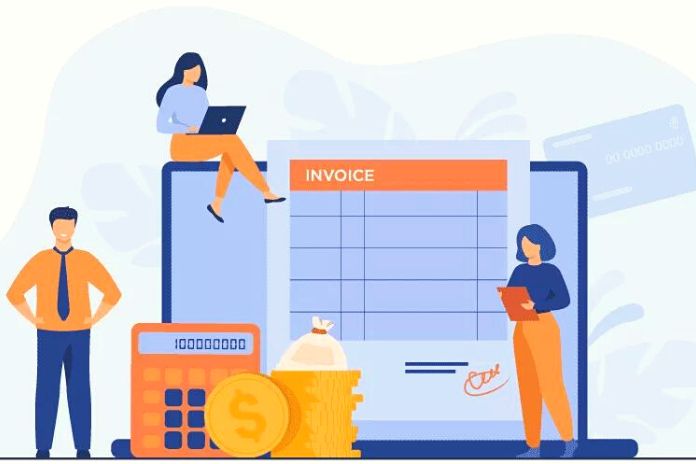KPIs (Key Performance Indicators) are crucial if you want to digitize invoice processing. They serve as a compass for optimizing the purchase-to-pay processes and reveal efficiency deficits and cost traps. Shopping is done digitally – not only in private life but in business. A full 36 percent of processes in corporate purchasing can already be automated with today’s technology. At the heart of these technologies are digital systems for purchase-to-pay – they are lean, transparent, and efficient. In view: the associated KPIs.
How do companies succeed in fully digitizing their purchase-to-pay process (P2P for short) without any breaks between the old and the new world? One topic that causes headaches for almost every company is incoming invoices. Therefore, they are ideal for measuring the quality of a P2P process, not least because they significantly affect cash flow.
Cost Per Invoice Is A Critical Figure In P2P
An excellent way to evaluate your processes is to look at the costs per invoice – one of the most important key figures, providing precise insights with little effort. Only those who include all factors will ultimately receive a meaningful average value. Among other things, there are costs for:
- staff
- administration
- IT
- printing
- mail delivery
Some costs arise from billing errors, late payments, lost supplier discounts, or audits. In non-digitized processes, the human factor can sometimes have a significant impact, pulling the determined average value down even further. Therefore, error corrections and the like costs are generously considered in advance. With digitized processes, on the other hand, it can be expected that the actual costs will even be lower than the calculated ones. Finally, future updates and new features should simplify the process even further.
Important KPI: Duration Of Invoice Processing
One of the most important key figures is the duration of invoice processing. How long does it take on average to process an invoice from receipt to verification to approval? This number provides an overview of the efficiency of the P2P process as a whole and tells companies how purposeful their accounting is. A practical guideline is a cross-industry average of around 15 days determined by the American Productivity & Quality Center (APQC).
To assess the concrete potential or advantages of digitizing the P2P process, the evaluation must go one level deeper and evaluate the individual steps of the process in terms of time. For example, if the formal review of a paper document takes too much time on average, a digital system could eliminate this step. Depending on the document type, a time saving of 50 to 90 percent is not unusual when switching from entirely paper-based to digitized processes.
Accounts Payable Runtime Relevant For The P2P Process
The accounts payable term reveals even more about the P2P process – i.e., the average time between receipt of a supplier invoice and actual payment to the company. This value is calculated as the average trade payables divided by the cost of sales times 365 days. Here, too, a clue: For companies in the S&P 1500 Index, the average vendor term in 2019 was 48.4 days. Companies can also optimize this value by maintaining data-supported relationships with their suppliers and making them digitally more flexible, resulting in a positive cash flow.
Keep An Eye On KPIs For Quality
After the time optimization, the quality is put to the test. Ideally, a digital process works with as few manual interventions as possible. The First Time Match Rate (FTMR) is a powerful indicator for discovering gaps. The First Time Match Rate value is the percentage of invoices that match each purchase order divided by the total number of invoices in Accounts Payable for the selected period. A low FTMR, i.e., frequent deviations between the invoice and the order, is often the result of too many media breaks, manual steps, and inefficient communication channels between the people involved.
Timely Payments
Another KPI for quality is the rate of on-time payments. Processes in which the company pays suppliers on time. A positive result on this score directly affects supplier relationships. Problems often arise with the incoming goods inspection, which usually requires a complex three-way comparison of the delivery note, including acknowledgment. Digital capture and workflows can ensure a constant flow of documents.
Realized Discount Rate
The next value is the realized discount rate, closely related to on-time payments. Because only costs that are received within the negotiated discount period bring the price reduction. Failures are doubly annoying because they not only waste working time processing invoices but also when dealing with discount periods. Only ten percent of all companies manage to meet at least 80 percent of the negotiated cash discount periods. Digitization is practically indispensable to be among the best.
Error Avoidance Through Digitization
A common yet annoying mistake in manual processes is duplicate payments. Although the supplier usually notices such a faux pas, double payments mean avoidable effort for everyone involved. Triggers are almost always simple types. Digitally automated process steps help to avoid such mistakes. Additional control mechanisms ensure the system detects errors in any remaining manual steps.
Digital Invoice Processing Facilitates Purchase-To-Pay
In addition to fast and clean invoicing processes, the structure of the supplier network plays a vital role in the efficiency of P2P management. A master database with as few different suppliers as possible speaks for purchasing that acts transparently and keeps an eye on everything. An industry standard KPI to measure this is the rate of suppliers per 1,000 invoices. The rate of contactless invoice processing draws the final line in evaluating your invoice management. As the name suggests, this is the percentage of all invoice transactions that take place entirely without human intervention. This is how companies recognize the progress they have made over time.
Also Read: What Are Low-Code Development Platforms?

